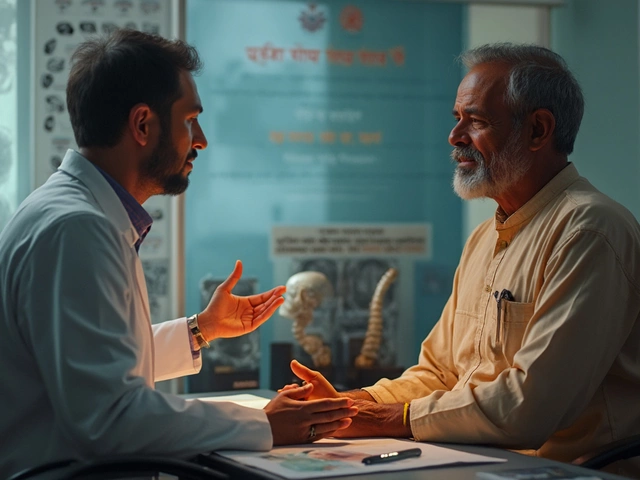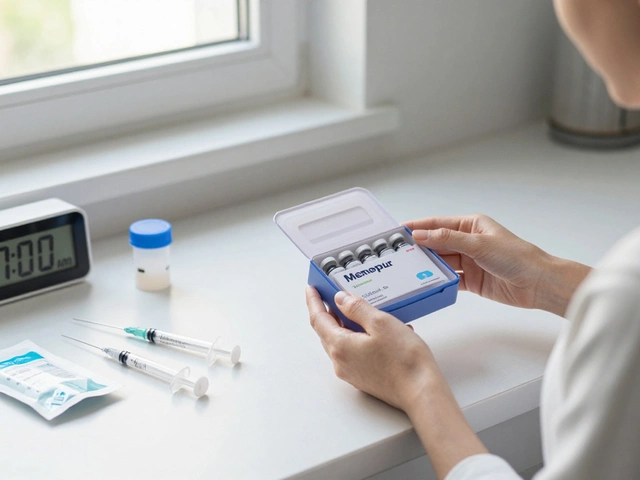So, is open-heart surgery still as dramatic as it used to be? Picture this: a few decades ago, having heart surgery pretty much meant a surgeon would make a sizeable cut down the middle of your chest, crack the sternum open, and get to work. Yes, it sounded quite like a horror movie scene!
Fast forward to today, and things are not that brutal anymore. Thanks to incredible advances in medical technology, less invasive techniques are often the go-to option. Many surgeons now use methods that involve smaller cuts and special instruments to access the heart, sparing those poor ribs from unnecessary trauma.
But why does this matter? Well, less bone breaking means a shorter recovery time, less pain, and fewer complications. That's a big win, especially if you're someone who's considering the surgery or has a loved one who is.
- Traditional Open-Heart Surgery
- Advancements in Surgical Techniques
- Minimally Invasive Alternatives
- Risks and Recovery
- What You Should Ask Your Doctor
- The Future of Heart Surgery
Traditional Open-Heart Surgery
Back in the day, if you needed open-heart surgery, the process was a bit intense. The surgeon would perform a procedure called a median sternotomy. Basically, they'd make a big cut down the middle of your chest, from the bottom of your neck to just above your stomach. Then, they'd break open the sternum, the bone running down the center of your rib cage, to gain access to the heart.
This approach provided a clear view and room to work but wasn't easy on the body. You can imagine the recovery wasn't short and sweet, either! Patients often dealt with significant pain and a long road to healing.
Why They Did It
The aim was to give surgeons a direct path to the heart to fix issues like blocked arteries or faulty valves. When you think about it, the heart is in a pretty tight spot, protected by the sturdy rib cage for good reason. Getting there required some extreme measures.
The Risks Involved
With this type of surgery, there were some serious risks. We're talking about infections, blood loss, and potential complications from being on a heart-lung machine. Plus, you had the whole issue of recovering from bones being literally broken apart.
| Year | Estimated Recovery Time |
|---|---|
| 1960s | 3-4 Months |
| 1980s | 2-3 Months |
| 2000s | 6-8 Weeks |
As you can see, while they did their best with what they had, it wasn't the most comfortable scenario for patients.
Advancements in Surgical Techniques
Let's talk about the modern magic happening in operating rooms today. Over the last couple of decades, the approach to heart surgery has changed a lot, thanks to advancements in technology and surgical methods. Gone are the days when surgeons had limited options involving breaking ribs to access the heart.
One of the most significant developments is the rise of minimally invasive surgeries like thoracoscopic surgery and robotic-assisted heart surgery. These methods utilize smaller incisions or even entry points between the ribs to perform complex procedures. What's the advantage? Less trauma to the body, which means patients can heal faster and with less pain.
Robotic Assistance
Robots in surgery sound a bit sci-fi, right? But it's true. Robotic systems help surgeons with enhanced precision, flexibility, and control during operations. It allows for more delicate movements and smaller cuts, making it possible to perform complex surgeries without slicing open the chest.
"The use of robotic systems in cardiac surgery has allowed for drastically reduced recovery times and smaller scars," says Dr. Amanda Clarke, a cardiac surgeon at the Royal Heart Institute.
Off-Pump Surgery
Another cool technique is the off-pump coronary artery bypass, often called beating-heart surgery. Unlike traditional methods that require stopping the heart, this technique allows the surgeon to operate while your heart is still beating, reducing complications linked to stopping and restarting the heart.
- Reduced recovery time compared to conventional methods.
- Less need for blood transfusions.
- Lower risk of certain complications.
With these advancements, heart surgery is not the terrifying prospect it used to be. These methods mean less pain, quicker recovery, and a faster return to your usual self. It's a win-win for patients needing open-heart surgery. Isn't it amazing how technology is transforming medicine?
Minimally Invasive Alternatives
These days, heart surgery doesn't necessarily mean breaking ribs like in the old days. Thanks to minimally invasive techniques, surgeons can access the heart without doing a major chest incision. We're talking about techniques that involve much smaller cuts and sometimes even no cuts at all!
One well-known method is robotic-assisted surgery. This involves a surgeon controlling a robot that performs the surgery with tiny tools and high precision. The main goal here is to reduce trauma to the body, leading to quicker recovery times and less pain. Isn’t tech amazing?
Types of Minimally Invasive Procedures
There are several types of minimally invasive surgeries to know about:
- Keyhole Surgery: This technique uses small incisions and a long, flexible tube with a camera, known as an endoscope. This allows surgeons to get a good look at the heart and operate with precision.
- Transcatheter Aortic Valve Replacement (TAVR): This is a great option for those needing a valve replacement. It involves threading a catheter through a blood vessel to reach the heart, totally bypassing the need to crack open the chest.
- Minimally Invasive Direct Coronary Artery Bypass (MIDCAB): For patients who need coronary artery bypass, this approach allows surgeons to work through smaller incisions between the ribs rather than a full sternotomy.
The benefits are pretty clear. Fewer complications, shorter hospital stays, and faster recovery make minimally invasive methods a game-changer in the field of modern surgery.
Considerations
Not everyone is a candidate for these types of modern surgery. Factors like age, overall health, and the specific condition of the heart come into play. It’s important to have a detailed discussion with your doctor to weigh your options.
Thinking about these open-heart surgery alternatives? That could lead to less time in recovery and more time getting back to the stuff you love.

Risks and Recovery
Diving into any surgery comes with its share of risks, and heart surgery is no different. Even though the methods are more advanced nowadays, you should be aware of the possible complications. Infection, bleeding, and reactions to anesthesia are some standard issues. There's also the possibility of heart arrhythmias or even stroke, which sound scarier but aren't common.
Recovery is a big part of the process, and with minimally invasive options, it's usually smoother. Typically, patients who've undergone these newer techniques get back on their feet quicker than those who had traditional open-heart surgery. That’s right—less pain and faster return to normal life are huge upsides.
What to Expect During Recovery
Let’s talk about what recovery actually looks like. Initially, you might spend a few days in the hospital. They’ll closely monitor how you’re doing, making sure your heart’s ticking along nicely. Once you’re home, taking it easy is key. Avoid heavy lifting, manage your stress levels, and don’t skip any follow-up appointments.
Don’t rush it—full recovery could take a couple of months, and that’s completely okay. Imagine it like training for a marathon: steady progress wins the race. Some folks even opt for cardiac rehab programs, offering structured exercise plans and emotional support as you regain your strength. Worth considering if it’s available to you!
| Factor | Recovery Time |
|---|---|
| Traditional Surgery | 8-12 weeks |
| Minimally Invasive | 4-8 weeks |
Remember, everyone’s different. Always chat with your doctor about what’s best for you, and listen to your body. Your heart—and those ribs—will thank you.
What You Should Ask Your Doctor
When gearing up for any type of heart surgery, getting the lowdown from your doctor is crucial. It’s not just about nodding along and hoping for the best. You want to be prepped with all the info you can get. Here’s a list of critical questions to ask your healthcare provider.
Understand the Type of Surgery
First things first, clarify what type of procedure you’re set to undergo. Not every open-heart surgery is the chest-cracking kind anymore. Ask whether a minimally invasive option is available and appropriate for your condition:
- What exactly will the surgery involve?
- Are there less invasive alternatives to the recommended procedure?
Potential Risks and Complications
Every surgery comes with potential risks. It's crucial to get them out on the table:
- What complications are most common with this surgery?
- How are such risks mitigated during the operation?
Preparation and Recovery Details
Knowing how to prepare and what recovery looks like can vastly improve your experience and outcome:
- How should I prepare in the days leading up to the surgery?
- What will recovery entail, both in the hospital and at home?
- How long before I can return to my usual activities?
Long-term Outcomes and Monitoring
Your journey doesn’t end post-surgery. Long-term care and results matter too. Ask about:
- How does this surgery impact my long-term health?
- What kind of follow-up care is important?
- How will my heart health be monitored post-surgery?
Being informed is empowering! Don’t hold back on those queries. Your doctor is there to ensure you're comfortable and clear on what lies ahead. Armed with this info, you can walk into that surgery in a much better mental space.
The Future of Heart Surgery
Ever wondered what the future holds for heart surgery? It's a pretty exciting time in the medical world. We're talking robots, virtual reality, and who knows, maybe surgeries carried out from halfway across the globe!
Robotic Surgery
One of the coolest advancements is the use of robotic systems. Imagine a surgeon working with a machine to do ultra-precise movements. These robots can make smaller cuts than even the steadiest human hand, reducing the impact on your body.
Telemedicine and Remote Procedures
Telemedicine isn't just for check-ups anymore. The idea of remote surgery, where a surgeon in one location controls a robot in a different location, is gaining traction. This could mean experts can perform complex open-heart surgeries without being physically present.
| Technology | Advancement |
|---|---|
| Robotic Assistance | Improves precision and minimizes incisions |
| Remote Procedures | Enables surgeries across distances |
3D Printed Organs
Sounds like sci-fi, right? But 3D printing organs could become a real thing. Researchers are working on printing tissues and even full organs, potentially eliminating waiting lists for transplants. While it's not in widespread use yet, the possibilities are huge.
So, does the future involve breaking ribs for open-heart surgery? Highly unlikely. In the coming years, we can expect heart procedures to become safer, less invasive, and more accessible, thanks to these groundbreaking technologies.





